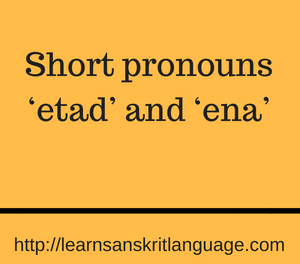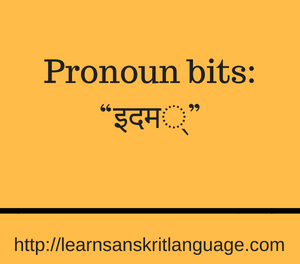One of the tricks that come while learning Sanskrit is to understand the stems and roots of nouns and verbs, as they are inconsistent regarding their behavior with the vowel endings. However, not all words end with a vowel, some of them end with consonants too. For example, words like; yogin, Karman, and Bhagavata. All of them end in consonants. They are called consonant stems.
They are a bit difficult to understand as they keep on changing their behavior with regards to the endings of the noun, but we have to learn them in order to clarity in Sanskrit grammar.
So to begin with there are three types of consonant stems nouns
- ONE STEM NOUN
- TWO STEM NOUN
- THREE STEM NOUN
But before that, let us first learn the endings of all the genders.
Endings (masculine and feminine)
| Singular | Dual | Plural | |
|---|---|---|---|
| Case 1 (subject) | () | औ au | अः aḥ |
| Case 2 (object ) | अम् am | औ au | अः aḥ |
| Case 3 (with) | आ ā | भ्याम् bhyām | भिः bhiḥ |
| Case 4 (for) | ए e | भ्याम् bhyām | भ्यः bhyaḥ |
| Case 5 (from) | अः aḥ | भ्याम् bhyām | भ्यः bhyaḥ |
| Case 6 (of) | अः aḥ | ओः oḥ | आम् ām |
| Case 7 (in) | इ i | ओः oḥ | सु su |
| Case 8 (address) | - | औ au | अः aḥ |
Endings (neuter)
| Singular | Dual | Plural | |
|---|---|---|---|
| Case 1 (subject) | - | ई ī | अः aḥ |
| Case 2 (object ) | - | ई ī | इ i |
| Case 3 (with) | आ ā | भ्याम् bhyām | भिः bhiḥ |
| Case 4 (for) | ए e | भ्याम् bhyām | भ्यः bhyaḥ |
| Case 5 (from) | अः aḥ | ओः oḥ | भ्यः bhyaḥ |
| Case 6 (of) | अः aḥ | ओः oḥ | आम् ām |
| Case 7 (in) | इ i | ओः oḥ | सु su |
| Case 8 (address) | - | ई ī | इ i |
You must have noticed that the dual and plural endings are quite similar to each other as compared to singular
The use of nasal sound
In cases 1, 2, and 7, there is an inclusion of nasal sound in it. The final vowel is lengthened and a nasal is added to it, stretching the l sound towards the end. Let’s take a look at the example to clarify the rule.
फल + इ → फला + न् + इ → फलानि
phala + i → phalā + n + i → phalāni
Fruits
फल + ई → फले
phala + ī → phale
Two fruits





